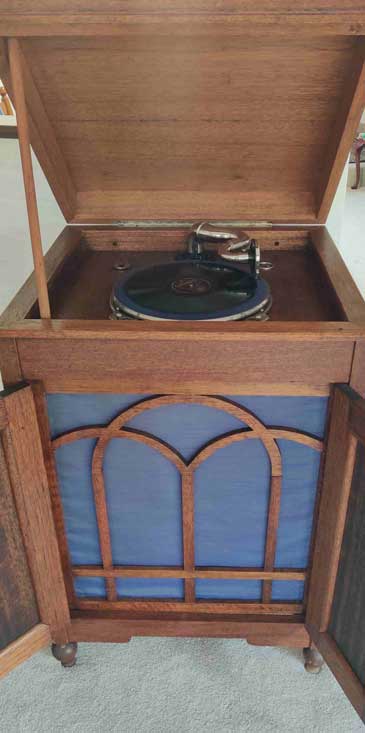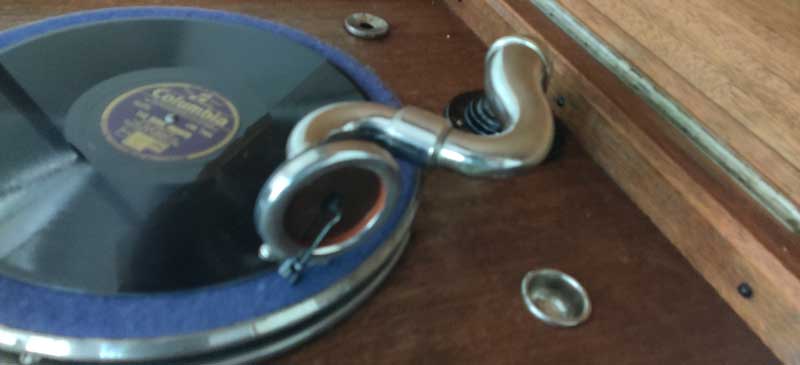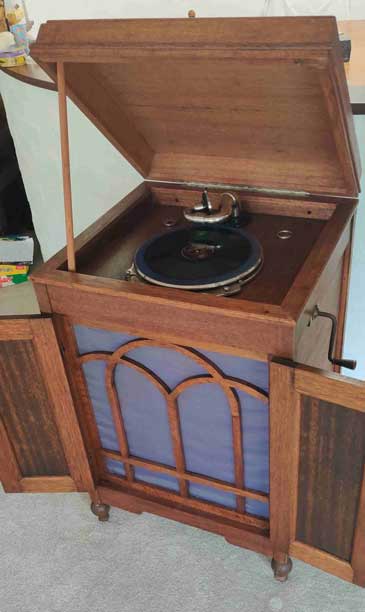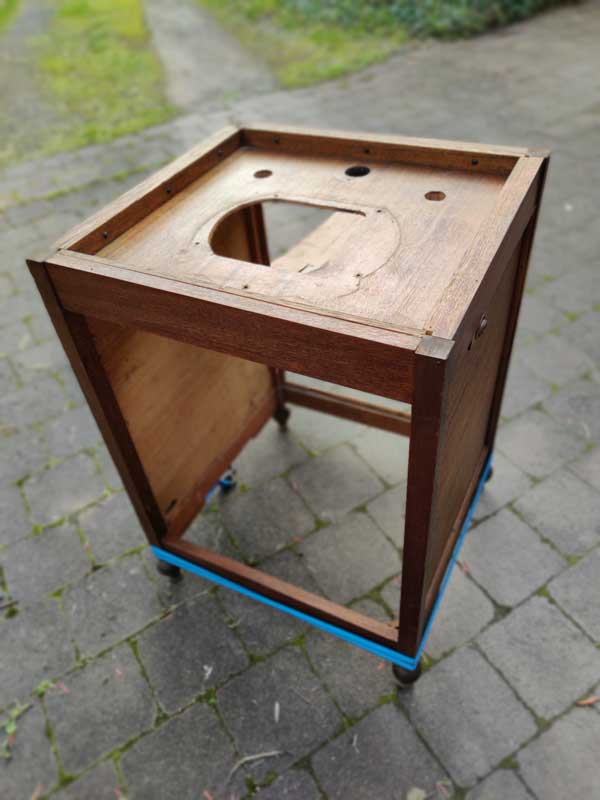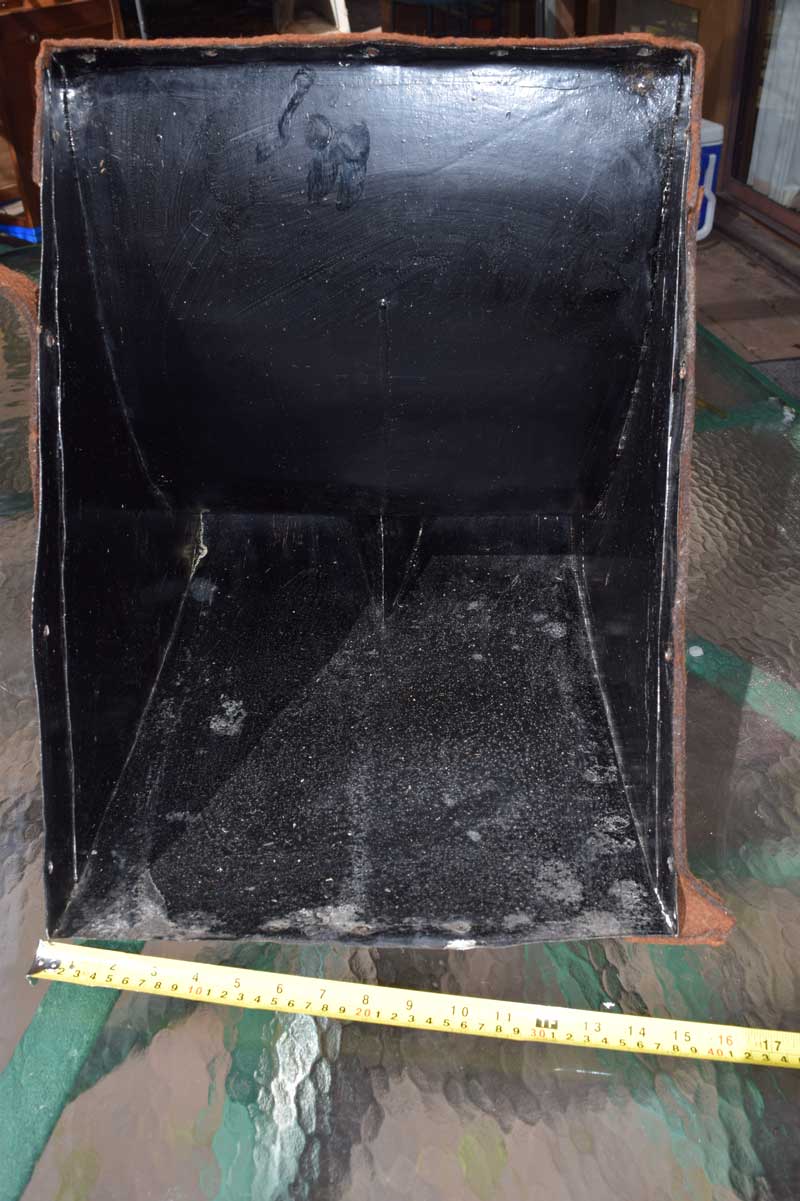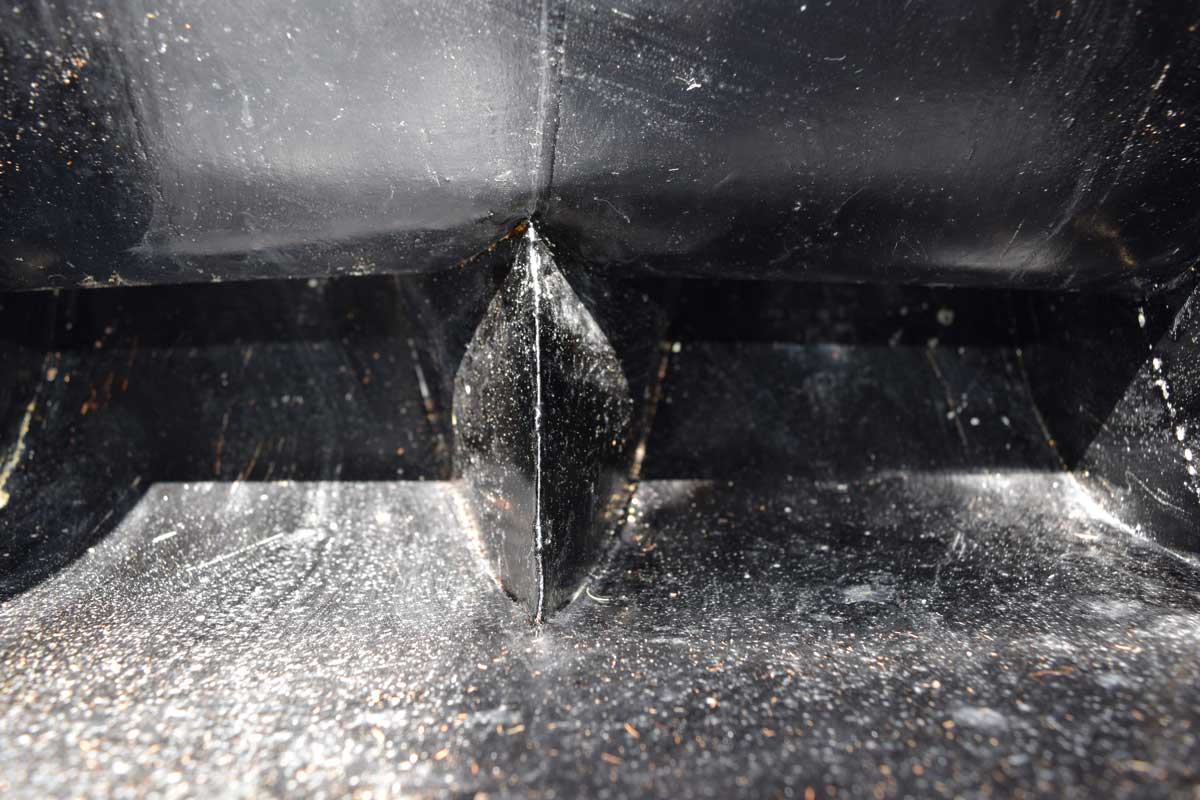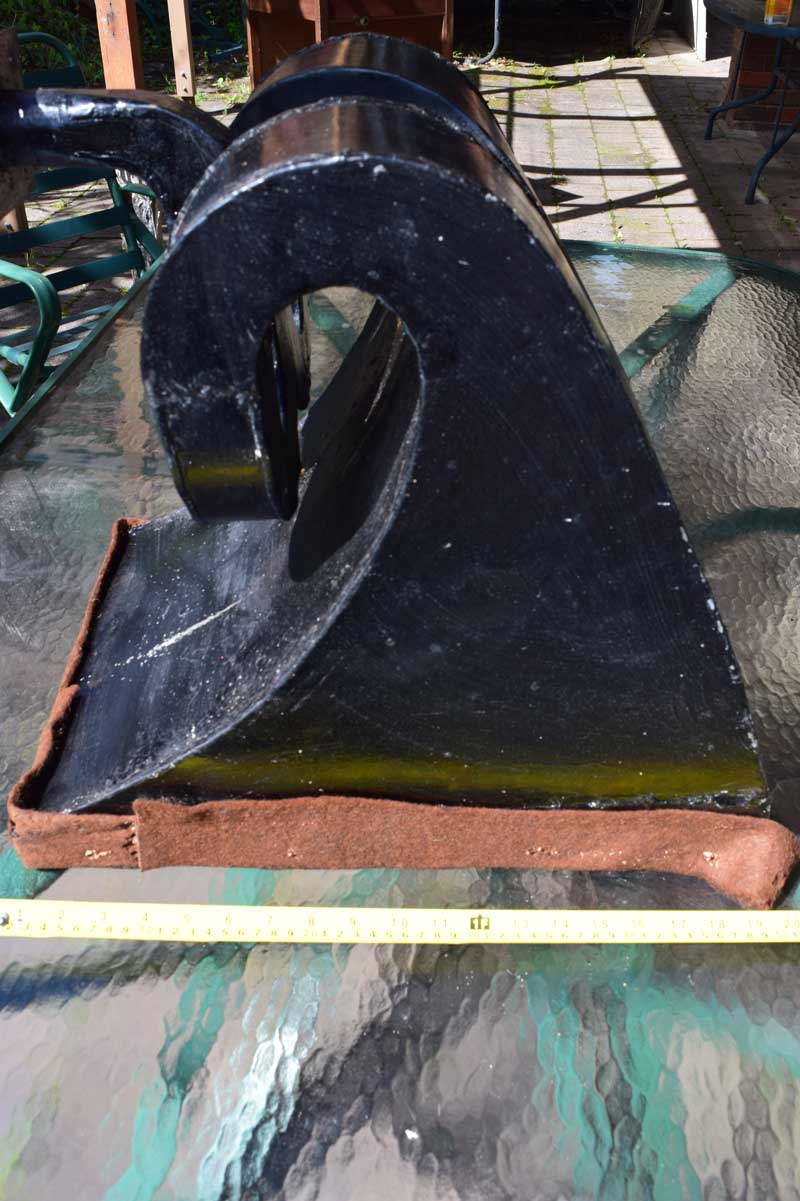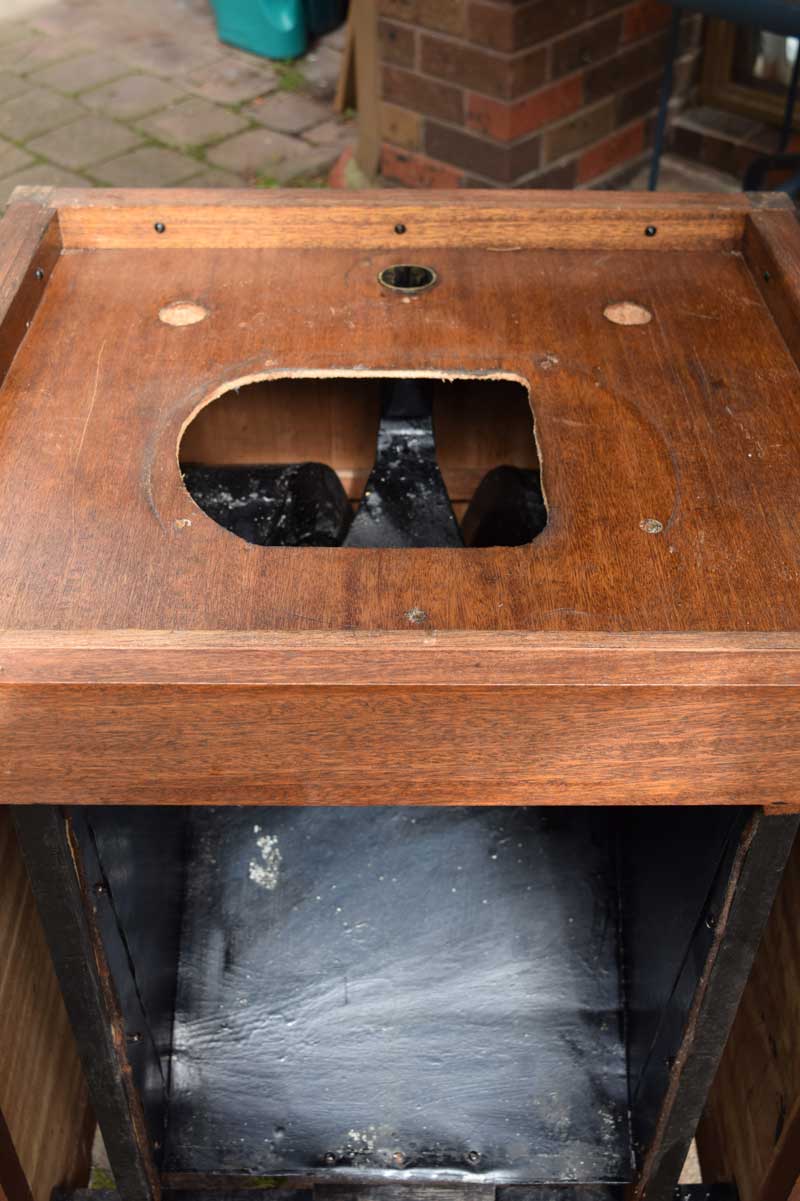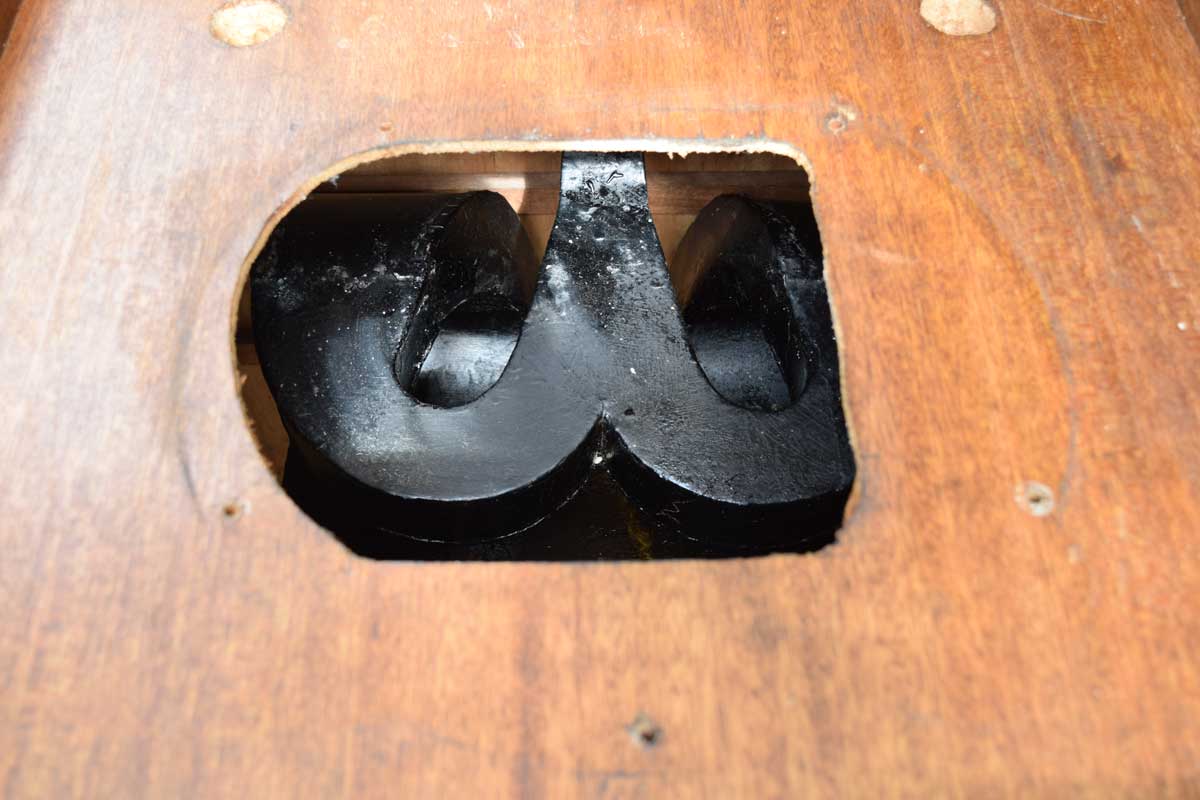Gramophone handmade by John S. Loxton and based on the HMV 157. C.1930
John Samuel Loxton (1903–1969) is considered one of Australia’s best landscape painters. “His naturalistic style was both acclaimed by audiences seeking traditional techniques and familiar scenes, and disparaged by those seeking art that was more expressive and modern. But Loxton’s faith to nature and his own artistic philosophy was staunch, he never submitted to the ever-changing trends of Modernism.”
This Self Portrait is from 1930. About the same time that he built this hand-made gramophone. It is based on an HMV 157 from September 1927 which was discontinued by 1933.
The 157 cabinet was built in Oak or Mahogany. It had a large two spring No32 motor, large bore swan-neck tonearm and a No5 or 5A soundbox. The unique zinc horn was divided into two as opposed to four in the later Orthophonic gramophones.
I acquired the gramophone from the Loxton family. The motor had broken down and the gramophone had not been used in decades although fond memories remained of playing with the speed control.
It was not uncommon for Australians to build their own gramophones. Parts were readily imported from around the world and cabinets were locally built. A lot of local gramophone manufacturers simply used off-the-shelf parts and built their own cabinets.
This gramophone was handmade by John S. Loxton and based on the HMV 157.
- The cabinet is made from solid hardwood, the side and back panels are laminated. Looks like Teak so probably Crow Ash. Very heavy indeed. The legs are turned instead of the long thin legs on the HMV 157.
- The motor is the superlative Garrard Super Motor. The governor was missing the three weight balls and the governor springs were broken. Someone tried to repair it and never finished the job. It’s now cleaned and restored, working well.
- The tonearm is a generic swan neck.
- It has an HMV No.4 soundbox as opposed to the HMV 5 or 5A which I am sure would make it sound even better.
- The horn is made of heavy sheet metal and exactly based on the HMV 157 "double exponential horn", a folded metal horn, divided into two sections, re-joining at the mouth. (The later re-entrant horns used in the Orthophonic HMV and Victor models were divided into four sections)
Compare it to an original HMV 157

